EVENTイベント情報
We are pleased to announce that “The 3rd International Symposium on AI Electronics” is going to be held.

Day 1
| Opening SessionSession Chair Prof. Hamada |
9:30-9:40 | Welcome addressPresident Hideo Ohno |
|---|---|---|
| 9:40-9:50 | Opening remarksProf. Toshiro Kaneko | |
| 9:50-9:55 | Announcement from Program chair | |
| Session 1Session Chair Prof. Sumii |
10:00-10:50 |
 Keynote speech 1
Keynote speech 1
AI for AccessibilityDr. Chieko Asakawa |
| 10:50-11:20 |
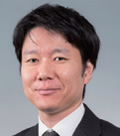 Invited talk 1 from Tohoku Univ.
Invited talk 1 from Tohoku Univ.
AI for Understanding Objects, Scenes, and More Through Vision and LanguageProf. Takayuki Okatani | |
| 11:20-11:50 |
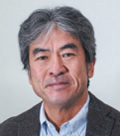 Invited talk 2 from Tohoku Univ.
Invited talk 2 from Tohoku Univ.
Healthcare-monitoring systems using mid-infrared lightProf. Yuji Matsuura | |
| 11:50-13:00 | Lunch break | |
| Session 2Session Chair Prof. Honma |
13:00-16:00 | Oral presentation from 32 students (5 min each) |
| 16:00-16:20 | Break | |
| 16:20-17:10 |
 Keynote speech 2
Keynote speech 2
On Security of EdgeML Devices Against Physical AttacksDr. Shivam Bhasin | |
| 17:10-17:25 |
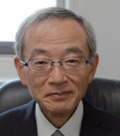 Invited talk from Kyushu Univ.
Invited talk from Kyushu Univ.
Graduate Program of Mathematics for Innovation
Prof. Osamu Saeki
|
Day 2
| Session 4Session Chair Prof. Hirooka |
9:30-9:35 | Announcement from Program chair |
|---|---|---|
| 9:40-10:30 |
 Keynote speech 3
Keynote speech 3
Cognitive Fiber CommunicationsProf. Shiva Kumar | |
| 10:30-11:00 |
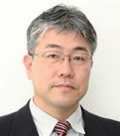 Invited talk 3 from Tohoku Univ.
Invited talk 3 from Tohoku Univ.
Prospects of MTJ-Based Nonvolatile Logic-in-Memory Circuits and Their Applications to AI HardwareProf. Takahiro Hanyu | |
| 11:10-12:00 | Oral presentation from 10 students (5 min each) | |
| 12:00-13:10 | Lunch break | |
| Session 5Session Chair Prof. Inui |
13:10-15:25 | Oral presentation from 25 students (5 min each) |
| 15:25-15:40 | Break | |
| 15:40-16:30 |
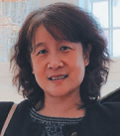 Keynote speech 4
Keynote speech 4
Exploring Emotional Cause and Effect for Empathetic Response GenerationProf. Wenjie Li | |
| 16:40-16:50 | Closing remarksProf. Masahiro Yamaguchi |
 Keynote speech 1
Keynote speech 1
AI for Accessibility
Dr. Chieko AsakawaIBM Fellow, IBM Research, Japan
Abstract
Technology helps visually impaired people become more independent than ever before. Voice-based Web access allows them to get all the information they need. Smartphones offer new experiences such as accessing information, communicating with others via SNS, and controlling home appliances in a mobile environment. AI is now offering new experiences for the visually impaired to recognize and understand their surrounding world. For example, computer vision technology starts describing scenes and people’s behavior around them, and recognizing their personal items, such as T-shirts, mugs and so on. The visually impaired users can expect to walk and travel around the world independently, naturally, and safely.
During her talk, she will first introduce how technology has changed her life. She will then talk about her latest research on the real-world accessibility, followed by the new challenges caused by the pandemic. Finally, she will discuss how we can accelerate the implementation of new technologies into society to achieve truly inclusive society.
Biography
Chieko Asakawa is an IBM Fellow, working in the area of accessibility. Her initial contribution to the field started from braille digitalization and moved onto the Web accessibility, including the world’s first practical voice browser. Today, Chieko is focusing on real world accessibility to help the visually impaired understand their surroundings and navigate the world by the power of AI. She has been serving as an IBM Distinguished Service Professor at Carnegie Mellon University since 2014. She started to concurrently serve as Chief Executive Director of the Japanese National Museum of Emerging Science and Innovation (Miraikan) since April 2021. In 2013, the government of Japan awarded the Medal of Honor with Purple Ribbon to Chieko for her outstanding contributions to accessibility research. She also received American Foundation for the Blind 2020 Helen Keller Achievement Award. She was elected as a foreign member of the US National Academy of Engineering in 2017, inducted into the National Inventors Hall of Fame (NIHF) in 2019.
 Keynote speech 2
Keynote speech 2
On Security of EdgeML Devices Against Physical Attacks
Dr. Shivam BhasinPrincipal Investigator, Nanyang Technological University, Singapore
Abstract
EdgeML combines the power of machine (deep) learning and edge (IoT) devices. Owing to its capability of solving difficult problems in sensor nodes and other resource constrained devices, EdgeML has seen adoption in variety of application domains like smart manufacturing, remote monitoring, smart homes etc However, being deployed on edge devices exposes machine/deep learning algorithms to range of new attacks specially physical attacks.
In this talk, we demonstrate practical physical attacks on EdgeML. First, we show how side-channel attacks can be used to reverse engineer architectures and parameters of deep learning models. These models are often proprietary with commercial value and contain information on sensitive training data. The feasibility of these attacks are shown both on standalone microcontrollers as well as commercial ML accelerators. Further, we demonstrate practical and low-cost cold boot based model recovery attacks on Intel Neural Compute Sticks 2 (NCS2) to recover the model architecture and weights, loaded from the Raspberry Pi with high accuracy. The proposed attack remains unaffected by the model encryption features of the NCS2 framework.
Biography
Dr. Shivam Bhasin is a Senior Research Scientist and Programme Manager (Cryptographic Engineering) at Centre for Hardware Assurance, Temasek Laboratories, Nanyang Technological University Singapore. He received his PhD in Electronics \& Communication from Telecom Paristech in 2011, Advanced Master (Mastère Spécialisé) in security of integrated systems \& applications from Mines Saint-Etienne, France in 2008. Before NTU, Shivam held position of Research Engineer in Institut Mines-Telecom, France. He was also a visiting researcher at UCL, Belgium (2011) and Kobe University (2013). His research interests include embedded security, trusted computing and secure designs. He has co-authored several publications at recognized journals and conferences. Some of his research now also forms a part of ISO/IEC 17825 standard.
 Keynote speech 3
Keynote speech 3
Cognitive Fiber Communications
Prof. Shiva KumarMcMaster University, Canada
Abstract
Cognitive dynamic system (CDS) is inspired by human brain and it is built on the principles of perception, memory, perception-action cycle, attention and language. In this talk, the CDS concept is applied to a fiber optic system. Typical systems that use CDS such as radio and radar are linear in nature. However, fiber optic system is nonlinear and the noise is non-Gaussian. The CDS concept is extended to non-Gaussian and nonlinear environment (NGNLE). The CDS has three main blocks – (i) preceptor which perceives the environment (i.e. fiber optic channel) and develops its statistical model, (ii) executive which takes action on the fiber optic system such as change the data rate/modulation format, and (iii) main feedback channel which sends internal reward from preceptor to executive. It is shown that the quality of service (QoS) can be significantly improved in a fiber optic system upgraded with CDS.
Biography
Shiva Kumar received the MS (1990), and Ph.D. degrees (1994) in electrical communication engineering from Indian Institute of Science, India, and a Ph.D. degree (1997) in communications engineering from Osaka University, Japan. He worked as a postdoctoral fellow at University of Jena, Germany, supported by Alexander von Humboldt Foundation from 1997-98. He worked at Corning Incorporated, New York as a Senior Research Scientist (1998-2001), as a Supervisor (2001-2002) and then as a Project Leader (2002-2003). Currently he is a Professor at McMaster University, Canada. In 2001, he obtained outstanding individual contributor award from Corning Inc., circle of excellence award from Photonics Spectra, and R&D 100 award by R&D magazine for the product Metrocor. His current research interests include fiber-optic and wireless optical communication, cognitive dynamic systems, solitons, nonlinear optics, photonic devices and general relativity. Dr. Kumar is a Fellow of Optical Society of America (OSA). Dr. Kumar has published about 90 papers in refereed journals and 7 book chapters. He authored a book on fiber-optic communications, edited a book on nonlinear fiber optics, and holds eight US patents in the field of optical transmission systems.
 Keynote speech 4
Keynote speech 4
Exploring Emotional Cause and Effect for Empathetic Response Generation
Prof. Wenjie LiThe Hong Kong Polytechnic University, Hong Kong
Abstract
Thanks to the rapid advance of artificial intelligence technologies, there is a explosion of interest in research and development of social conversation machines (aka. chatting machines) that can freely and appropriately converse to humans in a natural language. Empathy, the capability to understand and resonate with emotions and experience of other people, plays an important role in human conversations. It directly affects the way people interact with each other. Thus, a human-like chatting machine must be empowered with the necessary emotional intelligence in order to offer the continuous and enjoyable conversation experience. Not to mention how significant it is in the applications like accompanying lonely elderly, providing consulting services and appeasing angry customers. There is a practical need to develop novel emotion-enhanced social conversation models that enable machines to converse to humans properly in both content and emotion. This is exactly what we are targeted to. While previous works on empathetic response generation have focused merely on the emotional state of the user, leading to weak empathy and inane content, we incorporate emotion-intervened causes and effects into the model for empathetic responses with engaging content.
Biography
Dr. Wenjie Li graduated from the Chinese of University of Hong Kong. She is currently a full professor in the Department of Computing at the Hong Kong Polytechnic University. She worked in the fields of natural language understanding and natural language generation with main focuses on text summarization, question answering, human-machine conversation and knowledge graph reasoning, etc. Dr. Li has published more than 260 papers in top conferences like ACL, EMNLP, AAAI, IJCAI, KDD, WWW, SIGIR, and ACM, IEEE transactions journals. At present, her Google scholar citations are more than 8400 and H-index is 44. Dr. Li has led and participated in over 30 research projects including Hong Kong General Research Grants (GRF), Hong Kong Innovation and Technology Funds (ITF), National Natural Science Foundation of China (NSFC) Grants, and National 863 Projects. She was/is the editors of Computational Linguistic, i.e., the flagship journal of computational linguistic and Transactions of Association for Computational Linguistic. She has also served as the program committee chairs, (senior) area chairs and the publication chair in many conferences in the fields of artificial intelligence and natural language processing, including the program committee co-chair of ACL2021.
 Invited talk from Kyushu Univ.
Invited talk from Kyushu Univ.
Graduate Program of Mathematics for Innovation
- Nurturing Mathematical Modeling Talents with Mathematics Five Forces
Prof. Osamu SaekiInstitute of Mathematics for Industry, Kyushu University
Abstract
In the super-smart society that Japan aims at, Artificial Intelligence technology and data analysis are essential, but they have certain limits. The versatility and rigorousness of Mathematics have received attention as a way to break the limits and change our future business and life dramatically. Mathematics can make great contributions to innovation. However, unfortunately, the impact of Mathematics has not been so big, especially in Japan, because Mathematics has not actively collaborated with other fields, and other fields have not been fully utilizing Mathematics. In order to overcome the situation, we need new doctoral talents in Mathematics, so to speak, “mathematical modeling talents”. This is the main reason why we started the “Graduate Program of Mathematics for Innovation” in Kyushu University. The five skills that this program aims to cultivate are called “Mathematics Five Forces”. Having excellent mathematical and statistical skills is the basis and represents the soil, and by utilizing the mathematical modeling power and the power to co-create across organizations and fields, it fertilizes the lush leaves to create innovation and blooms flowers in each field, in turn cultivating “Math-for-Innovation Professionals”.
Biography
Osamu Saeki is a distinguished professor at Kyushu University. He received his Ph.D. in Mathematics from the University of Tokyo in 1992. In 1987, he joined the Department of Mathematics, Yamagata University, and then moved to Hiroshima University in 1993. Since 2002, he is a professor of Kyushu University. He was awarded the Takebe Katahiro Prize 1996 and the Geometry Prize 2015 from the Mathematical Society of Japan. He was involved in establishing the Institute of Mathematics for Industry (IMI), Kyushu University, launched in 2011, and is now the director of the institute. He is also the coordinator of the WISE program, called the “Graduate Program of Mathematics for Innovation”, supported by MEXT, Japan. His current research interests concern topology, singularity theory, topology of low-dimensional manifolds, knot theory and visualization of large scale data.
 Invited talk 1 from Tohoku Univ.
Invited talk 1 from Tohoku Univ.
AI for Understanding Objects, Scenes, and More Through Vision and Language
Prof. Takayuki OkataniGraduate School of Information Sciences, Tohoku University, Japan
Abstract
There has been tremendous progress in developing AI that understands objects, scenes, and more from their images. We may be able to see its applications to solving practical problems soon. The key to success is the interplay between visual and linguistic information. For instance, what the AI understands can only be revealed through natural language communication with humans (and other AI agents). I will discuss how far we (i.e., the research community) have come and what remains to be done while introducing the research activity of our research group.
Biography
Takayuki Okatani received his B. Sc., M.Sc., and Ph. D degrees in Mathematical Engineering and Information Physics from Graduate School of Engineering at Tokyo University, 1994, 1996, and 1999, respectively. Currently, he is a Professor in Computer Vision at Tohoku University. He also serves as a Leader of Infrastructure Management Robotics Team at RIKEN Center for Advanced Intelligence Project (AIP) from 2016. His research interests are in the field of computer vision and machine learning. He is a member of IEEE, IPSJ, IEICE, and SICE.
 Invited talk 2 from Tohoku Univ.
Invited talk 2 from Tohoku Univ.
Healthcare-monitoring systems using mid-infrared light
Prof. Yuji MatsuuraGraduate School of Biomedical Engineering, Tohoku University, Japan
Abstract
Healthcare monitoring systems based on mid-infrared spectroscopy are introduced. Those systems utilize compact quantum cascade lasers, hollow optical fibers transmitting mid-infrared light, and a semiconductor detector working at room temperature. The system configurations and experimental results on measurement of blood glucose level and cholesterol amount are reported.
Biography
Yuji Matsuura received the Ph.D. degree in electrical communication engineering from Tohoku University, Sendai, Japan, in 1992. Then he was a Research Engineer with Sumitomo Electric, Yokohama, Japan. From 1994 and 1996, he was a Postdoctoral Researcher with Rutgers University, New Brunswick, NJ, USA, and he became an Associate Professor with Tohoku University, Sendai, Japan. Since 2008, he has been a Professor with the Graduate School of Biomedical Engineering, Tohoku University. His research interests include application of specialty fiber optics in medical fields, hollow waveguides for ultraviolet and infrared light, and optics for soft and hard X-rays. His work has focused on development of healthcare systems based on spectroscopic analysis of body surfaces and exhaled breath using mid-infrared and ultraviolet light. He is a Member of the SPIE and the Optical Society of America and he is a fellow of Laser Society Japan.
 Invited talk 3 from Tohoku Univ.
Invited talk 3 from Tohoku Univ.
Prospects of MTJ-Based Nonvolatile Logic-in-Memory Circuits and Their Applications to AI Hardware
Prof. Takahiro HanyuResearch Institute of Electrical Communication, Tohoku University, Japan
Abstract
Nonvolatile spintronic devices have potential advantages such as fast read/write, and high endurance together with back-end-of-the-line compatibility, which offers the possibility of constructing not only stand-alone RAMs and embedded RAMs that can be used in conventional VLSI circuits and systems, but also standby-power-free and high-performance VLSI processors, where a new logic-circuit style, called "Nonvolatile (NV) Logic-in-Memory (LIM) Architecture" that merges nonvolatile storage elements into CMOS logic-gate circuits is used [1],[2]. The advantages of employing spintronic devices, especially magnetic tunnel junction (MTJ) devices combined with CMOS circuits are discussed and the current status of the MTJ-based VLSI computing paradigm is presented along with its prospects and remaining challenges.
In my presentation, some AI-hardware examples based on MTJ-based LIM architecture are presented and their suitability for Internet-of-Things (IoT) applications are discussed [3]-[4].
[1] T. Hanyu, et al., Proc. IEEE, l. vol.104, no.10, 1844/1863, Oct. 2016.
[2] M. Natsui, et al., IEEE JSSC, vol.54, no.11, 2991/3004, Aug. 2019.
[3] M. Natsui, et al., JJAP, STAP article, vol.59, 050602(7pages), April 2020.
[4] D. Suzuki, et al., NOLTA, IEICE, vol.E12-N, no.4, 695/710, Oct. 2021.
Biography
Dr. Takahiro Hanyu received the B.E., M.E. and D.E. degrees in Electronic Engineering from Tohoku University, Sendai, Japan, in 1984, 1986 and 1989, respectively. He is currently a Professor and Education/Research Councilor (from April, 2018 to present) in the Research Institute of Electrical Communication, Tohoku University. His general research interests include nonvolatile logic circuits and their applications to ultra-low-power and/or highly dependable VLSI processors, and post-binary computing and its application to brain-inspired VLSI systems.
He received the Sakai Memorial Award from the Information Processing Society of Japan in 2000, the Judge's Special Award at the 9th LSI Design of the Year from the Semiconductor Industry News of Japan in 2002, the Special Feature Award at the University LSI Design Contest from ASP-DAC in 2007, the APEX Paper Award of Japan Society of Applied Physics in 2009, the Excellent Paper Award of IEICE, Japan, in 2010, Ichimura Academic Award in 2010, the Best Paper Award of IEEE ISVLSI 2010, the Paper Award of SSDM 2012, the Best Paper Finalist of IEEE ASYNC 2014, and the Commendation for Science and Technology by MEXT, Japan in 2015. Dr. Hanyu is a Senior Member of the IEEE.





